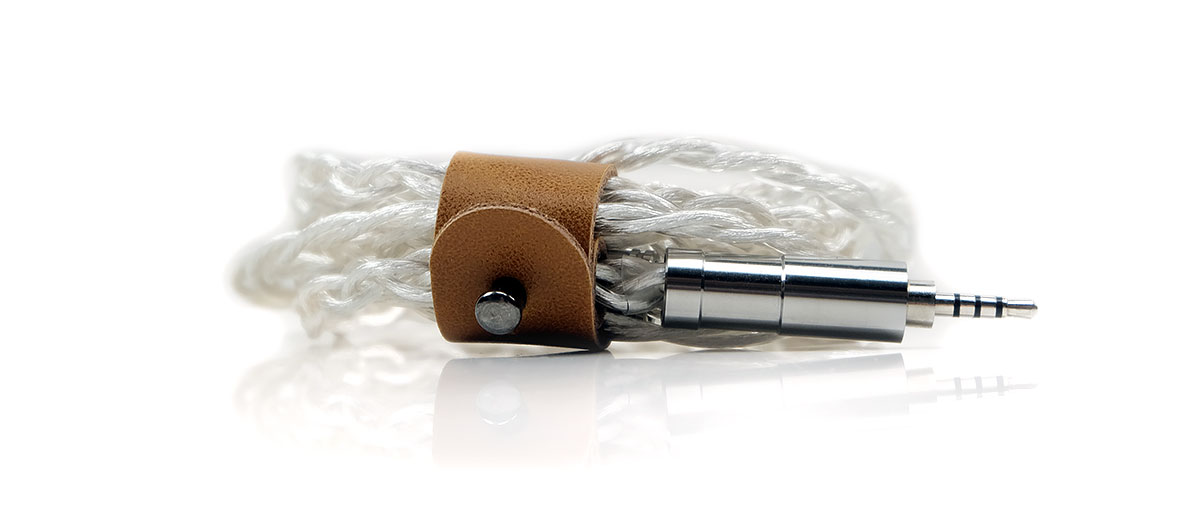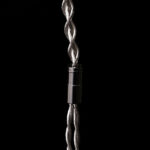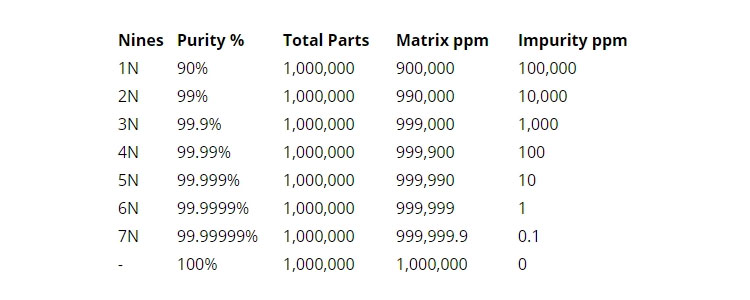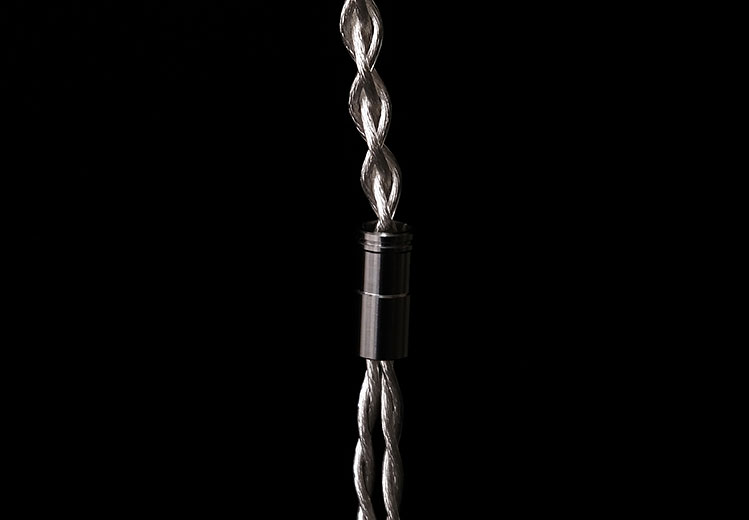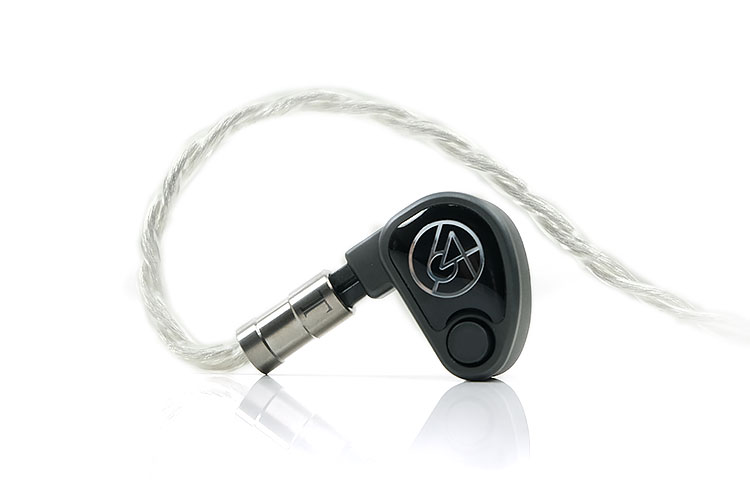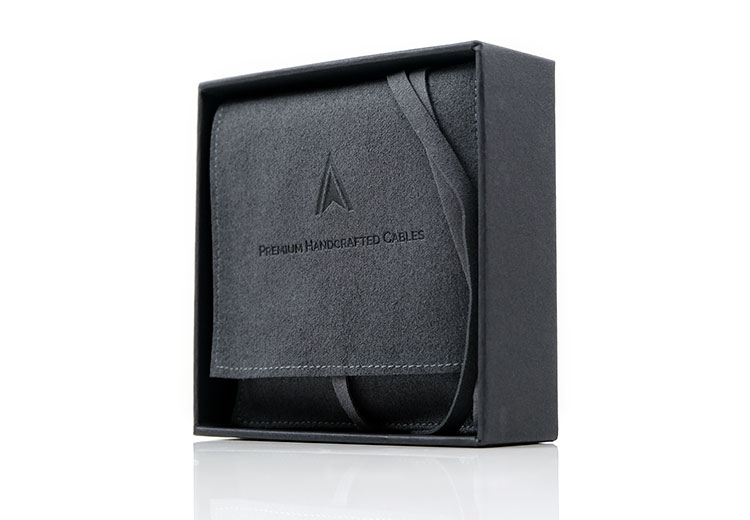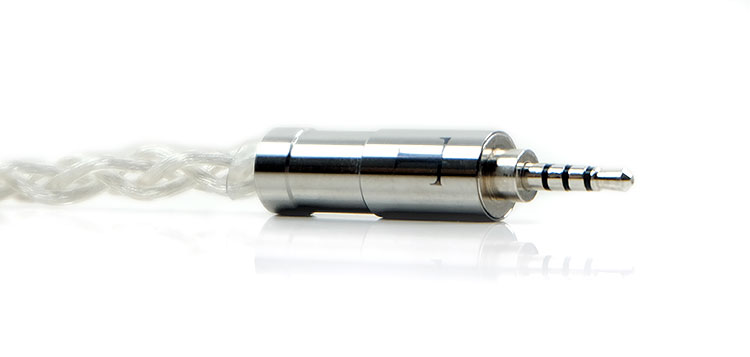This is a review of the Astral Acoustics Reference Silver, which is a 4-wire 23.5AWG Type 6 Litz 5n Silver aftermarket IEM cable made in Hong Kong. It is priced at $750.
Disclaimer: The Astral Acoustics Reference Silver was sent to us as a sample in exchange for our honest opinion in this review. We thank Astral Acoustics for this opportunity.
To learn more about Astral Acoustics reviews on Headfonics you can click here.
Note, this 2-page review follows our new scoring guidelines for 2022 which you can read up on here.
Hong Kong’s Astral Acoustics continue the revamp of their aftermarket cable line-up with a new high-end option called the Reference Silver. This one is priced at $750 so one possible alternative to the likes of Effect Audio Cleopatra, whose price point is not that far off.
However, despite both being pure silver wires, the geometry and the intended sound signature are quite different from each other. Not all silver cables are bright little things.
I was impressed with their Stage 1 last year and felt it was quite a step up from their older Taurus from 2018. I am guessing that the Reference Silver might be a successor to the previous Libra line, which was also from 2018, though that one used a silver-gold alloy.
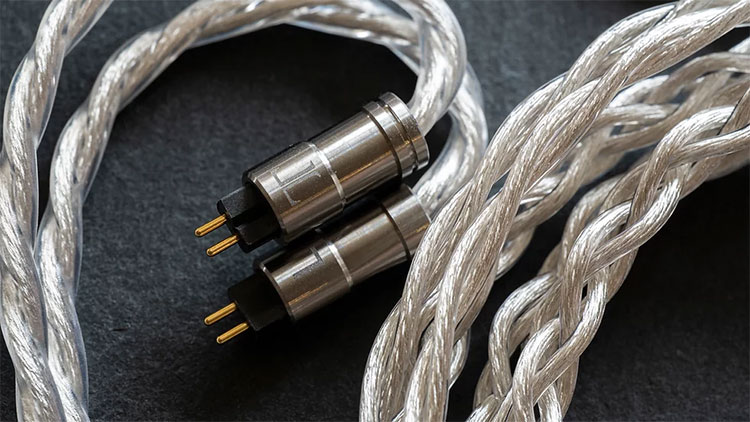
Tech Highlights
Materials & Wire
The Reference Silver uses a pure 5N OCC Silver (T6 Ag) silver composition for its internal wiring. For those that are new to what the 5N means, this is basically a purity level of the silver used with 1N the lowest and 7N the highest.
This is how purity is defined when acquiring alloying materials. It is not a wholly accurate measure and is generally taken as an approximation but the N stands for numbers on either side of the decimal point.
In this case, 5 numbers or 99.999%, which is in the upper quartile of the chart. You will see lower purity standards such as 4N and it works in the same manner at 99.99%. The numbers above give you a broader understanding of the entire range used.
The Reference Silver gauge is also quite large at 23.5AWG, certainly less resistive than the usual aftermarket 26AWG sweet spot. However, that means that the outer diameter of the wire is a little bit bigger at 1.6mm and that is reflected in its weightier bulkier in its overall external aesthetic.
Whilst not as stuffed as the 480 strand Wagnus Zillion Sheep creation from Japan, the 116 0.05m strand count is pretty healthy and depending on the soldering should provide a consistent contact point for each termination.
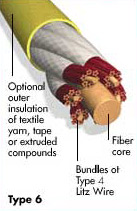
Geometry
Astral Acoustics uses a Type 6 Litz geometry with a 4-wire implementation for the Reference Silver which is a bit more complex than the previously reviewed Stage 1 Type 4 design.
Generally speaking, Litz is an excellent wire for reducing the level of resistance, especially on lower gauge variants. Their lack of material depth and excellent insulating properties means they do a better job than most reducing the skin and proximity effect on typical non-Litz wiring.
A Type 6 wire is a fairly advanced Litz configuration. The geometry is certainly a lot more complex as it features bundles of Type 4 wire twisted around a fiber core whereas Type 1 and 2 wiring has no individual cores.
Each Type 4 wire has its own core which acts as a dampening element to reduce vibration, regulate consistent conductivity as well as generally produce a better feel when handling.
A well-built Litz cable, in theory, will, therefore, deliver a better high-frequency performance than a standard build cable. It will also be more durable than other cables when flexed and less prone to decay.
On an aesthetic level, more and more builds of this type are turning to Litz also to prevent nasty green oxidization tints that develop on regular non-Litz builds. This cable should retain its color for life.
Design
No messing around with the 1.2m Reference Silver design as this is about as silvery as you can get for a cable aesthetic. No doubt helped along by a fairly soft and translucent PVC jacket allowing the 5N pure silver wire to shimmer through loud and clear.
The tone of the cable is complemented by some beautifully crafted TA4 Titanium barrels and connectors which, though not quite as shiny, do harmonize quite well with the general look of the design.
Given its large gauge size, the overall diameter of this cable is a bit bigger than your standard 26AWG aftermarket cable. However, what impresses me about the Reference Silver build is just how tight the braiding is.
Sometimes cable makers loosen it up to accommodate the thicker wire but here it remains fairly tight with a nice short throw making it much more disciplined in terms of handling. Loose binds can sink a quality cable either through basically unraveling or being accidentally caught on something and causing chaos.
Despite the enhanced density, this cable is incredibly quiet during handling and wearing. The low microphonic performance is superb below the splitter and impressively low above where you would expect the noise levels to be higher
There are some translucent PVC overmolds for strain relief but it is quite low-profile with about 0.5cm at the base of the jack barrel. Strain relief seems internal to the matching splitter barrel with a medium-length memory wire mold doubling for strain relief on the connectors.
Finishing
The Reference Silver comes with a more premium finish over the Stage Series with the use of similarly toned TA4 titanium materials for connectors, splitter, and jack barrels.
The cutting is actually very nicely done on each barrel and adjustable chin cinch with a definite setup in terms of complexity compared to the Stage 1 barrels.
These are not too sharp for handling but clean enough to look very attractive to the eye. None of the barrels have any grippy texture on them so the barrels compensate with some recessed areas between the edging to allow you to get a clean grip on them with your fingers.
Like Stage 1, there is some etching on each barrel but rather than the A, (Astral) logo, this time you have a Romanized T logo to reinforce the titanium theme. For the connector barrels, you have a small decal on the inside to denote the left and right channels for accurate connecting to your monitors of choice.
I found the overall weight of the Reference Silver cable to be similar to the previous Stage 1, however, the handling was a bit different due to the lighter smaller profile TA4 jack barrel. Stage 1 has this bigger denser stainless-steel version that biased the swing of the cable when loose.
I do not get that leading motion from the Reference Silver jack nor do I think it will place as much strain on any 2.5mm TRRS jacks with the reduced weight.
For connectors, Reference Silver can be fitted with a wide range of terminations including 0.78mm 2-pin and MMCX standards as well as popular alternatives such as IPX and a welcome qdc option also. The jack options will cover most bases with 3.5mm TRS, 2.5mm TRRS, and 4.4mm Pentaconn.
Comfort On The Ear
Despite the additional size and weight of the Reference Silver’s 23.5AWG 4-wire built the slightly longer connector barrels do a nice job of mitigating any necessary downward pressure.
Using a 64 Audio U6t as an example, the cable is pushed out then over which means you feel it more on the back of your ear than the top which is where things tend to be more sensitive.
The use of springy memory PVC coating will also dampen the pressure slightly but can introduce a little more microphonics if they come into contact with hair or brush to the side of the head. This cable is actually fairly quiet for microphonics with any physical noise being picked up primarily above the splitter not below.
Despite the lighter jack barrel, the cable discipline is excellent during use. It has zero flyaway springy qualities when hanging loose and a fairly stable quality to its movement behind the ear also.
Of course, that larger wire will feel heavier around the ear compared to a 4-wire but it is not going to give as many problems as an 8-wire for glasses users. I am still addicted to 8-wire despite the extra weight but when I slap on my reading glasses I do appreciate how much lighter a lower wire count can be.
Accessories & Packaging
The Reference Silver compact packaging and accessories are almost the exact same as Stage 1. Given the price difference I might have expected a bit more but then again how much more can you offer with a cable save maybe a more elaborate box and cleaning cloth?
One extra we do get which answers a request from the Stage 1 review is a tanned leather and suede cable organizer strap that’s actually permanently attached to the cable. It’s has a nice soft quality to it and quite easy to use.
Personally, I would have liked it to have been separated from the cable for choice purposes as it does add to the weight. However, it works really nicely to keep the Reference Silver organized when not in use.
We also get the Stage 1 tie-string grey suede front flap pouch which I do appreciate as not many cable providers outside of the big names offer any sort of carrying case. It does not provide a huge amount of protection but rolled up, the Reference Silver fits nice and easy inside.
Performance Impressions
Summary
Astral Acoustics describes the Reference Silver as having no coloration and to some extent that is true.
However, I believe in contextualizing so if you are used to a warmish rich-sounding cable combination then the Reference Silver is definitely going to take you more into neutral territory.
On the flip side, it is not a bright cable either unless your monitor or source is inherently bright or your track has a feisty mix. It will tease out a lot more natural treble presence if the monitor has it so for example, a Vision Ears VE7, known for some gorgeous top-end shimmer, will not suddenly sound hot or tizzy.
Rather, it comes into focus, and in doing so spatial note overtones have an additional smattering of brilliance that makes it so very easy to pick up on, even during casual listening.
Ultimately, the Reference Silver is a revealing and very transparent cable, and where it excels for me is in the technical domain. By that, I mean an IEM’s dynamic range and resolution from that excellent large gauge pure silver wire which is a beauty if you are after an upgrade from your stock cables in terms of clarity and staging capability.
It does a great job of pushing out the boundaries of the stage, much more so than competing cables such as the 4-wire Cleopatra and Astral’s own Stage 1. Whilst not as dense as the Cleopatra, the Reference Silver will deliver a ‘big airy sound’, an immersive wall of detail, and a very holographic presentation overall from our tested monitors.
Timbre
What the Reference Silver will not do is add additional warmth to your instrumental timbre, fatten the bass or smooth out the vocal. This is a very accurate sounding cable for any pairing and any richness or warmth is likely to be coming from the stock tuning of your IEM or your source’s coloration.
However, and back to the dynamic range point, it will vastly improve how any IEM ‘slams”. There is very little softness with this cable pairing, everything sounds very precise and particularly well-defined especially on the low-end. It’s like taking the equivalent of taking an audio torch and shining it right the way down to the bottom of what a monitor is capable of reaching.
So, if you are after PRaT the Reference Silver does very well but without adding any substantial coloration or body to the low-end, rather it relies on your monitor’s timing and optimizing the transient response from the drivers to impress.
Conversely, whilst the treble is not soft and relaxed it will not introduce any metallic overtones or accentuate any bright spots. That’s a bit of a meme for me with silver cables, perhaps poor ones years ago would sound thin and brittle for upper-mids and treble coloration but that is not the case here. It stays resolutely neutral and in some cases slightly sweet as it is with the MEST MKII.
Staging & Dynamic Range
So, if you are ok with neutral, love the sound of your monitor then in terms of staging qualities and dynamics this is where the Reference Silver truly excels.
I spoke before about that big sound and that’s exactly what you get with this cable. The 3-dimension quality of our tested monitors was very impressive with a lot of air, a lot of reach at both ends of the FR, and in particular, a lot of natural power from dynamic driver hybrids.
Again, I must emphasize this is not to be confused with the amount of body. The likes of Stage 1 and the Cleopatra have a slightly warmer and denser low-end with richer notes, a slightly longer decay, and perhaps a more forward imaging performance also, (Stage 1).
Rather the power and depth come from the improved dynamic range and clarity. The attack and decay of our monitor notes were very fast, notes came in and left with very little lingering which for me tends to deliver a very vivid and lively presentation.
The staging width is wide, very wide with the right monitor with some excellent channel separation when testing from balanced outputs from the like of the DX300 MAX. Going back to the VE7, it sounds so much wider and airier compared to Stage 1 and the silver STE AG W16 cable.
Stage 1 gives you more of a focus on the bass and vocal performance sounding more intimate in the process whereas the AG W16 simply sounds a bit more compressed in all directions with the VE7.
Click on page 2 below for pairings and Select Comparisons

